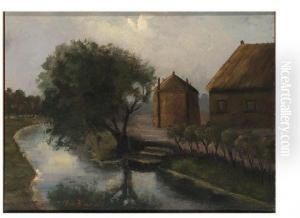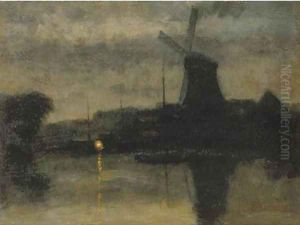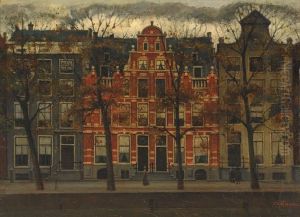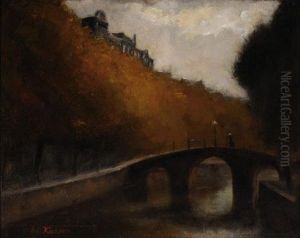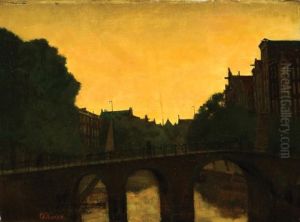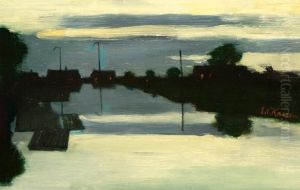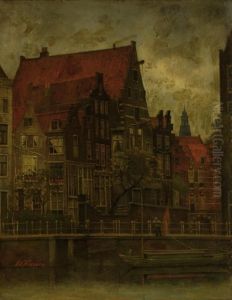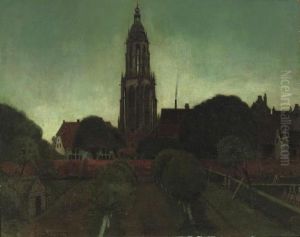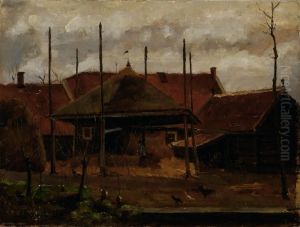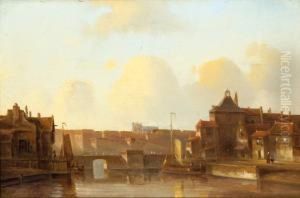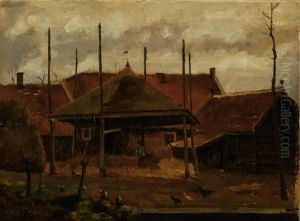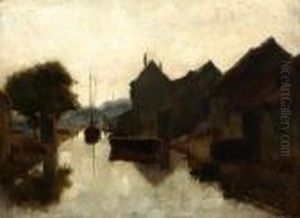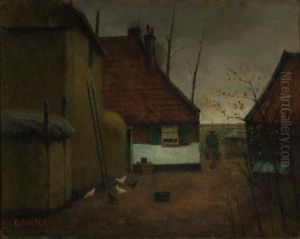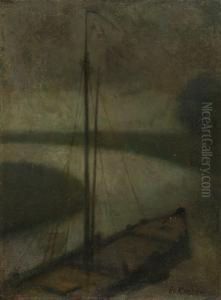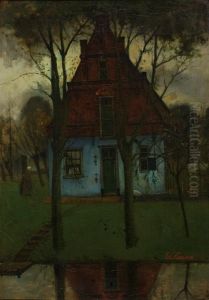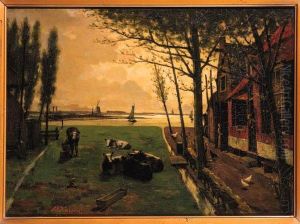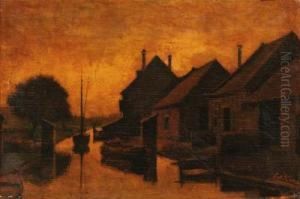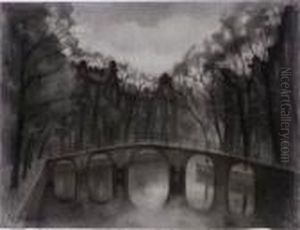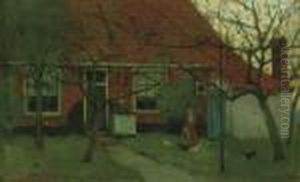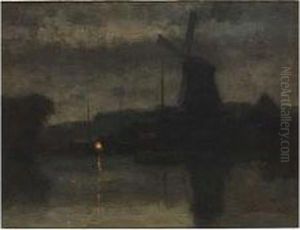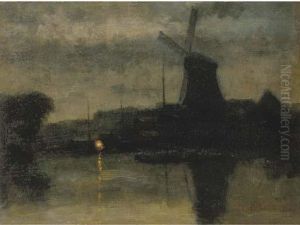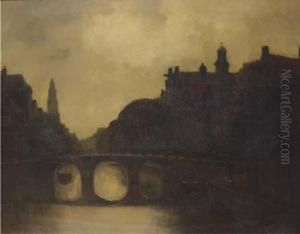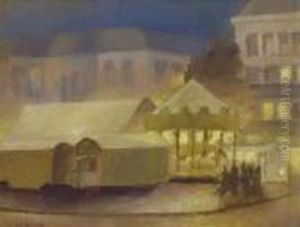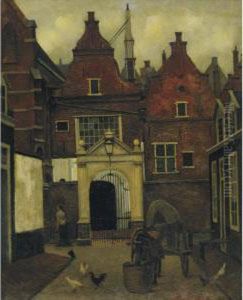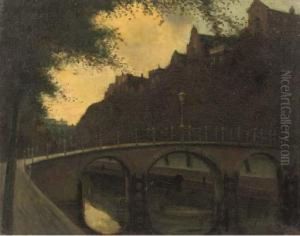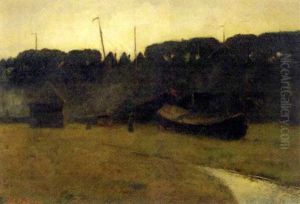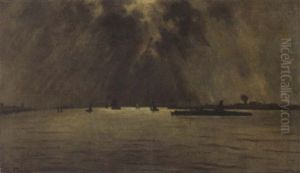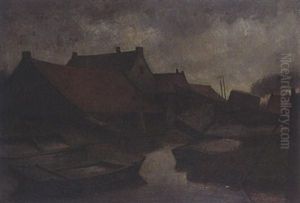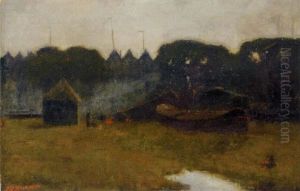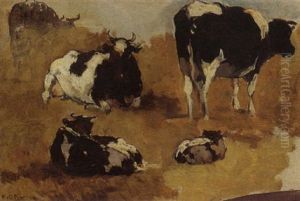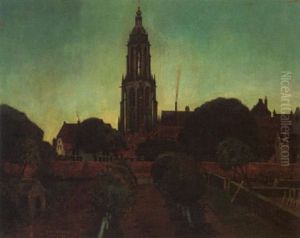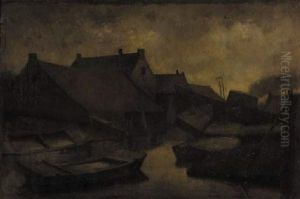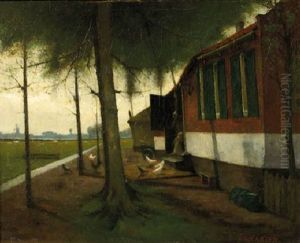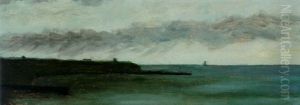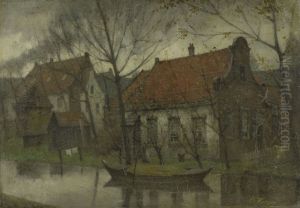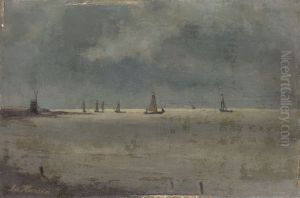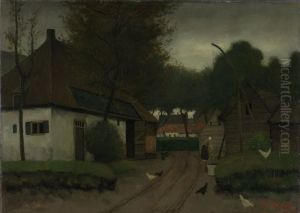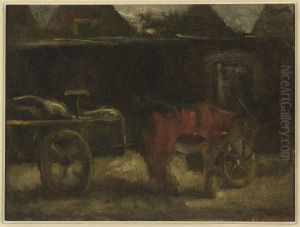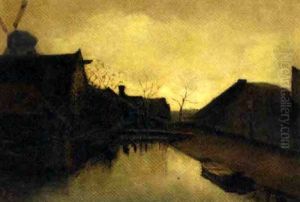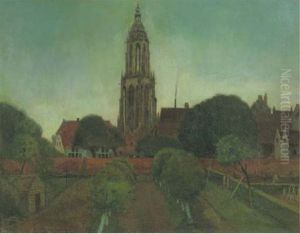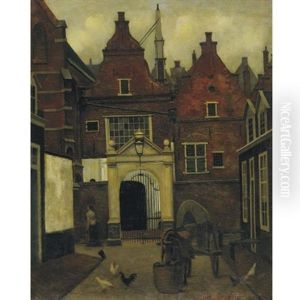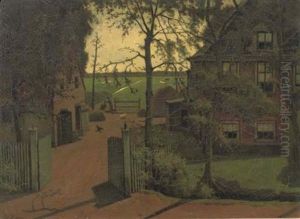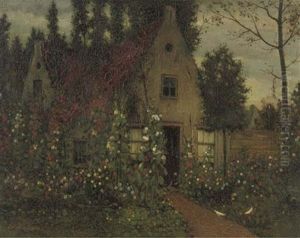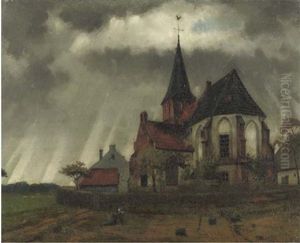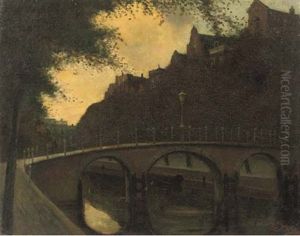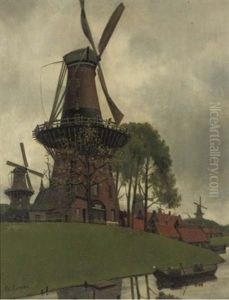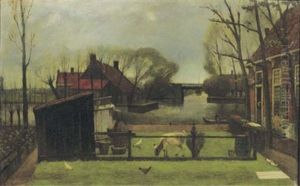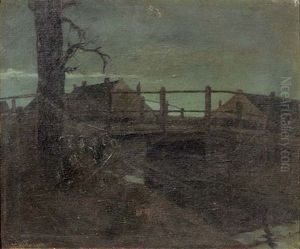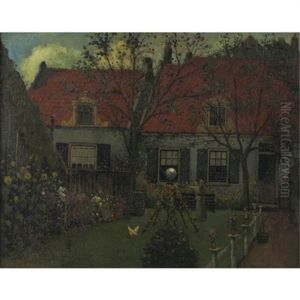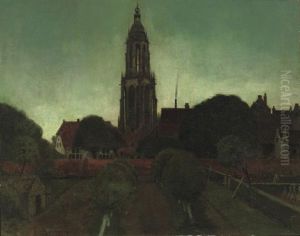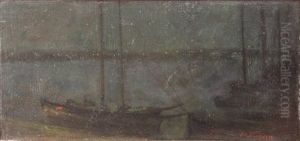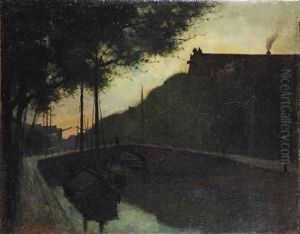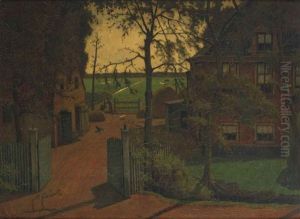Eduard Karsen Paintings
Eduard Karsen was a Dutch painter, born on April 10, 1860, in Paris, France. He was the son of the Dutch landscape painter Kaspar Karsen. Eduard is known for his atmospheric urban landscapes and depictions of cityscapes, mostly of Amsterdam. His style was influenced by the Hague School, a group of artists who lived and worked in The Hague between 1860 and 1890, and whose work was characterized by a moody realism, often depicting the Dutch countryside.
Karsen's early life was spent in the artistic environment due to his father's profession. He received his initial training from his father and later continued his education at the Rijksakademie van beeldende kunsten (State Academy of Fine Arts) in Amsterdam. His works exhibit a keen observation of light and shadow, which he used to create a specific ambiance in his paintings. Karsen's choice of palette often consisted of muted tones, which was typical for the Hague School painters.
Throughout his career, Eduard Karsen achieved moderate success and participated in various exhibitions. He was not as widely recognized as some of his contemporaries, but his work was appreciated for its quiet beauty and poetic representation of urban scenes. In addition to his cityscapes, Karsen also painted rural landscapes and interiors, but it is his images of Amsterdam, with its canals and historical buildings, that have garnered the most attention.
Karsen's artistic output diminished later in his life, and he died on March 23, 1941, in Amsterdam. Today, his work can be found in the collections of several Dutch museums, including the Amsterdam Museum and the Rijksmuseum. While Karsen may not be as well-known as other members of the Hague School, his contribution to Dutch art, especially in capturing the essence of urban life in the late 19th and early 20th centuries, continues to be recognized by art historians and enthusiasts.
